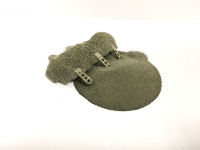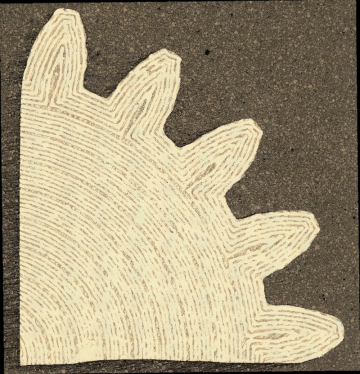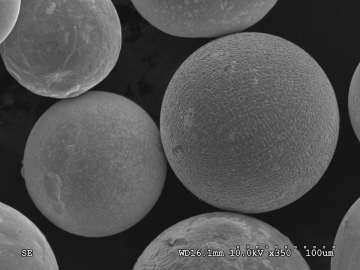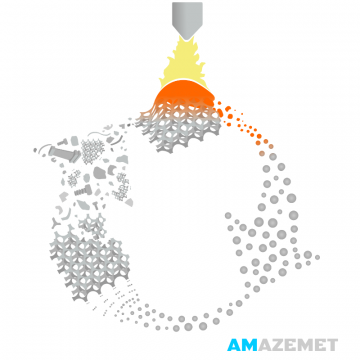New materials for 3D printing
Today on the market there are several thousand different metallic materials available. However only about 30 of them are used for metal 3D printing. New alloys appear slowly, because a lot of resources are needed to develop the proper feedstock – powder with custom chemical composition. Scientists from the Warsaw University of Technology have developed a technology that solves these problems.
The most popular technology of metal 3D printing is laser direct metal laser sintering (DMLS) – explains prof. Wojciech Święszkowski, Head of the Materials Design Division who together with the Dean of the Faculty of Materials Science and Engineering prof. Jarosław Mizera supervises the work of 3D metal printing laboratory. - The material is distributed evenly and then melted with laser beam to reproduce the cross-section of the produced part. Then another layer of powder is applied and melted, connecting the cross-sections with each other. The molten metal remains in the liquid state only for a fraction of a second, so its structure remains nonequilibrium, and the properties may be better than in traditionally manufactured materials.
– The full use of this effect can be observed in nanocrystalline and amorphous materials – says Łukasz Żrodowski, creator of the new powder production technology and CEO of the Amazemet spin-off. – There are materials with extraordinary properties such as metallic glass from which three-dimensional solid objects are often impossible to produce with other methods. This makes metal 3D printing not only a process of forming a shape, but also the synthesis of materials with improved properties.
History
Research on DMLS technology at the Faculty of Materials Science and Engineering started in 2011.- At that time it was a completely new technology in Poland, our first laboratory device, Realizer SLM 50, was purchased as part of the CePT project – says Bartłomiej Wysocki PhD, who almost 8 years ago began work on metal 3D printing. – We had to gain experience training subsequent generations of operators and experts. Fortunately, it turned out that we can conduct world-class research, implementing innovations and publishing in the world-best journals. Since then, we've promoted dozens of technologies as part of national strategic projects that we ran in the laboratory. Our work mainly focuses on scaffold materials for bone tissue engineering and regenerative medicine.
In 2019, the Faculty purchased a new EOS M100 machine, dedicated to the production of materials for aviation. – Research is currently focused on the production of heat-resistant nickel superalloys – says Ryszard Sitek PhD, supervisor of the 3D printing laboratory from the Aerospace Group of the Materials Design Division.
New materials
It soon became apparent that DMLS technology allows obtaining materials with improved properties.
– Not only thin-walled cell structures, but also fine-tuning the chemical composition, e.g. by controlled oxygen pickup during printing allow for obtaining better materials – says Bartłomiej Wysocki PhD – supervisor of the biomaterial part of the 3D printing laboratory and CEO of MaterialsCare, which commercializes medical solutions developed in the laboratory. – From the very beginning of the laboratory's operation, we've experimented with various titanium alloys (including Ti6Al4V and Ti6Al7Nb) as well as composites based on titanium and ceramics. Since 2014, we have been working on metallic glasses, which ended in their spectacular commercialization by selling the patent application to Heraeus GmBH.
Own device
- Traditional methods of powders production require either high capital expenditure or a multi-stage procedure of forming the material into a wire - explains Łukasz Żrodowski. - In both cases, it was not possible to quickly produce a powder suitable for 3D printing on laboratory scale.
Therefore, in 2016, we came up with an idea to create device of own design - suited to the technology and the needs of researchers. Thanks to this, instead of producing industrial quantities of materials on large industrial equipment, waiting weeks and paying thousands, scientists can obtain exactly as much material as they need and quickly fine-tune its properties. This will significantly improve research work.
Closed-loop system
The solution developed at the Warsaw University of Technology – rePowder allows user to produce high-quality powder regardless of the initial form of the feed material. Pure elements, previously produced alloy, but also failed printouts, can be easily pulverized. Full powder production cycle is performed within one device, and in combination with a DMLS printers it creates a closed loop R&D system in accordance with the principles of circular economy.
The three groups operating at the Faculty that develop new 3D-printed alloys will definitely benefit from the new device: a Biomaterials Group, a Group of Aerospace Materials and a Structural and Functional Materials Division. - We want the device to serve researchers and promote our technology - say Łukasz Żrodowski – inventor of the rePowder device.











